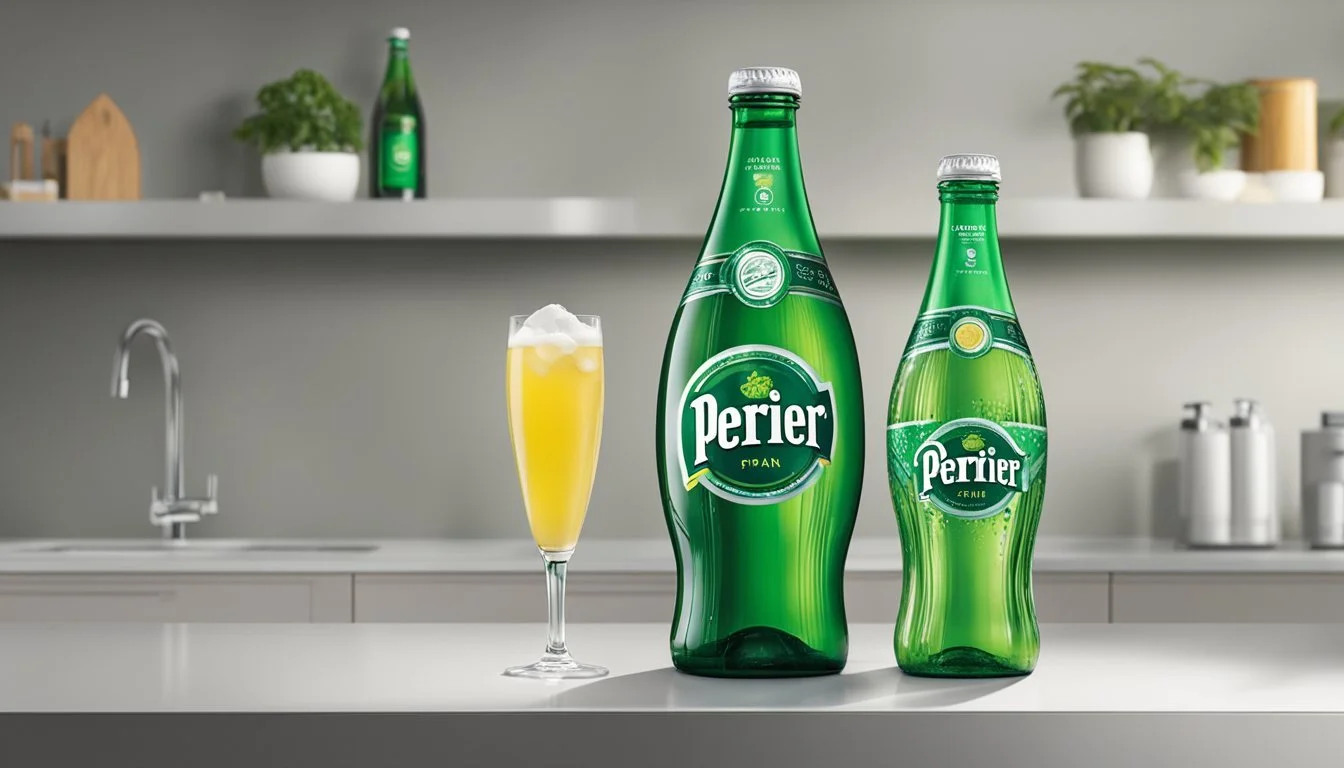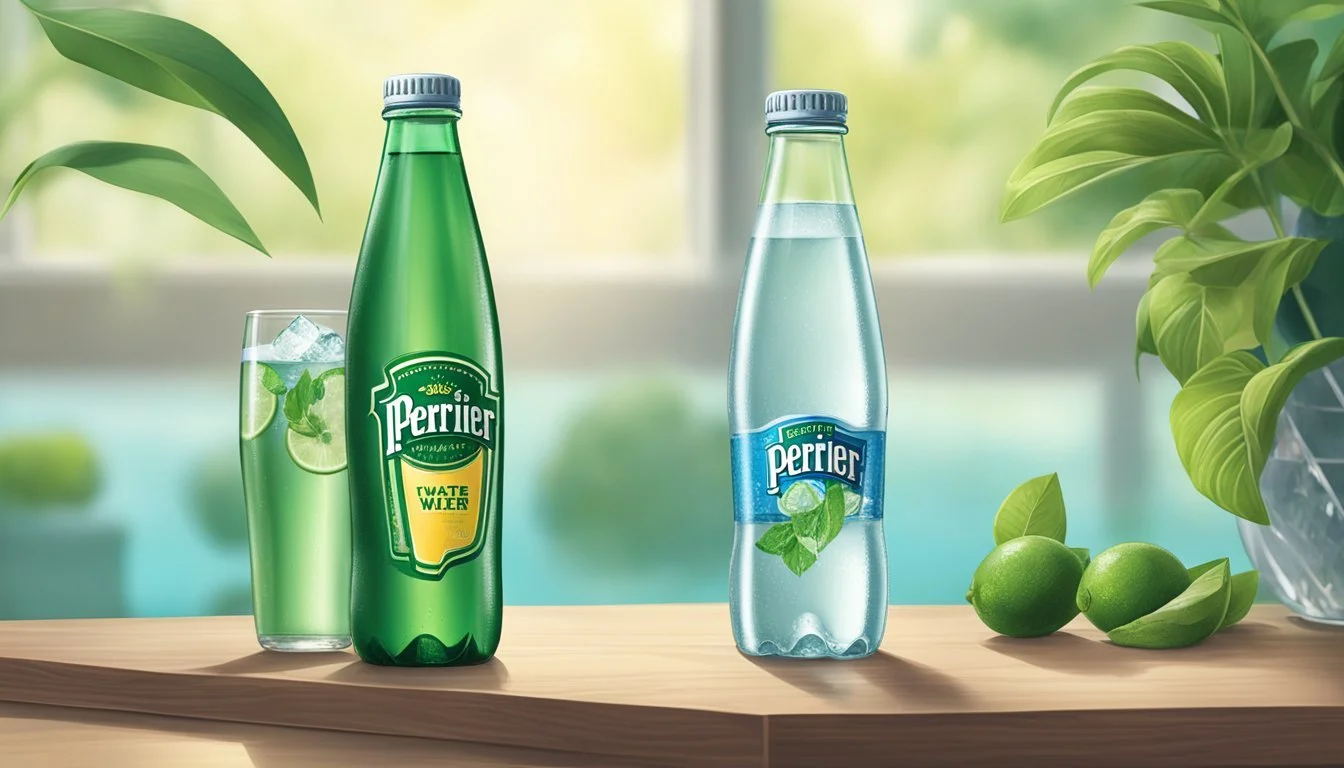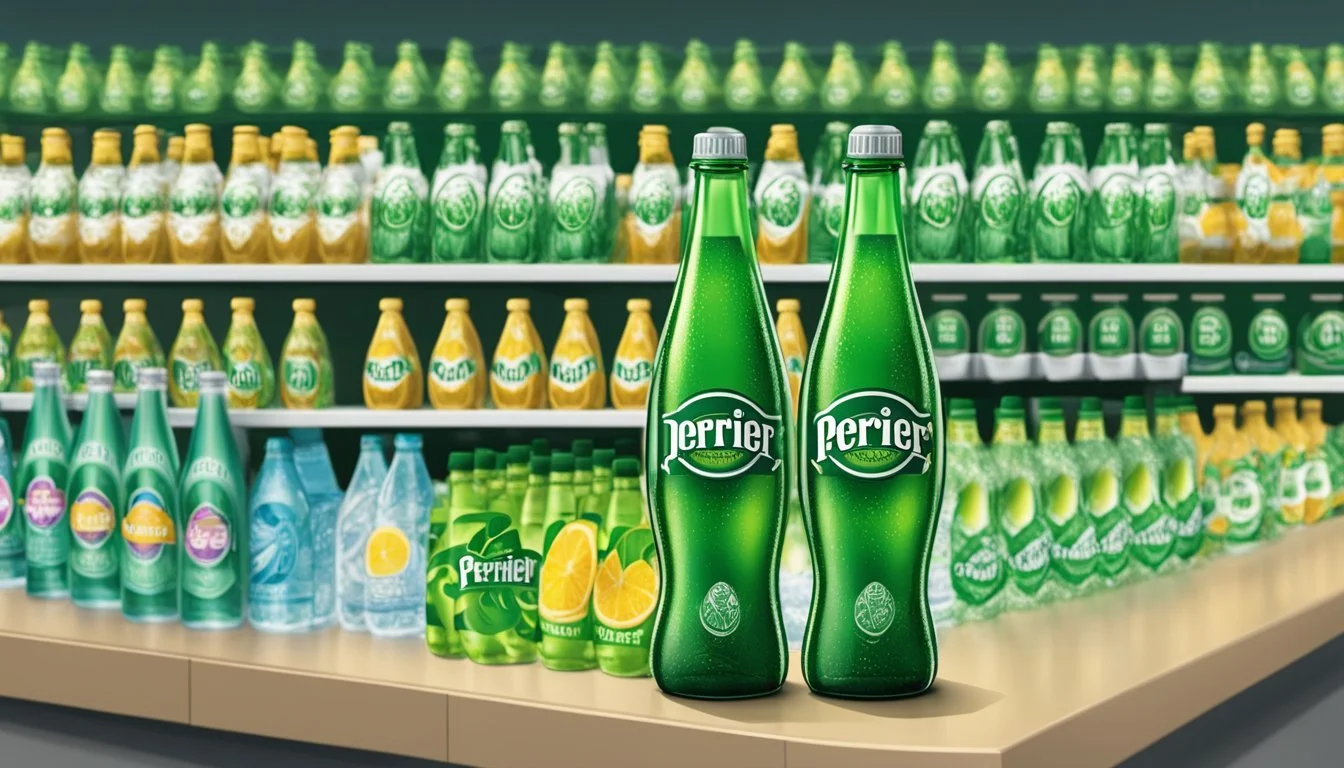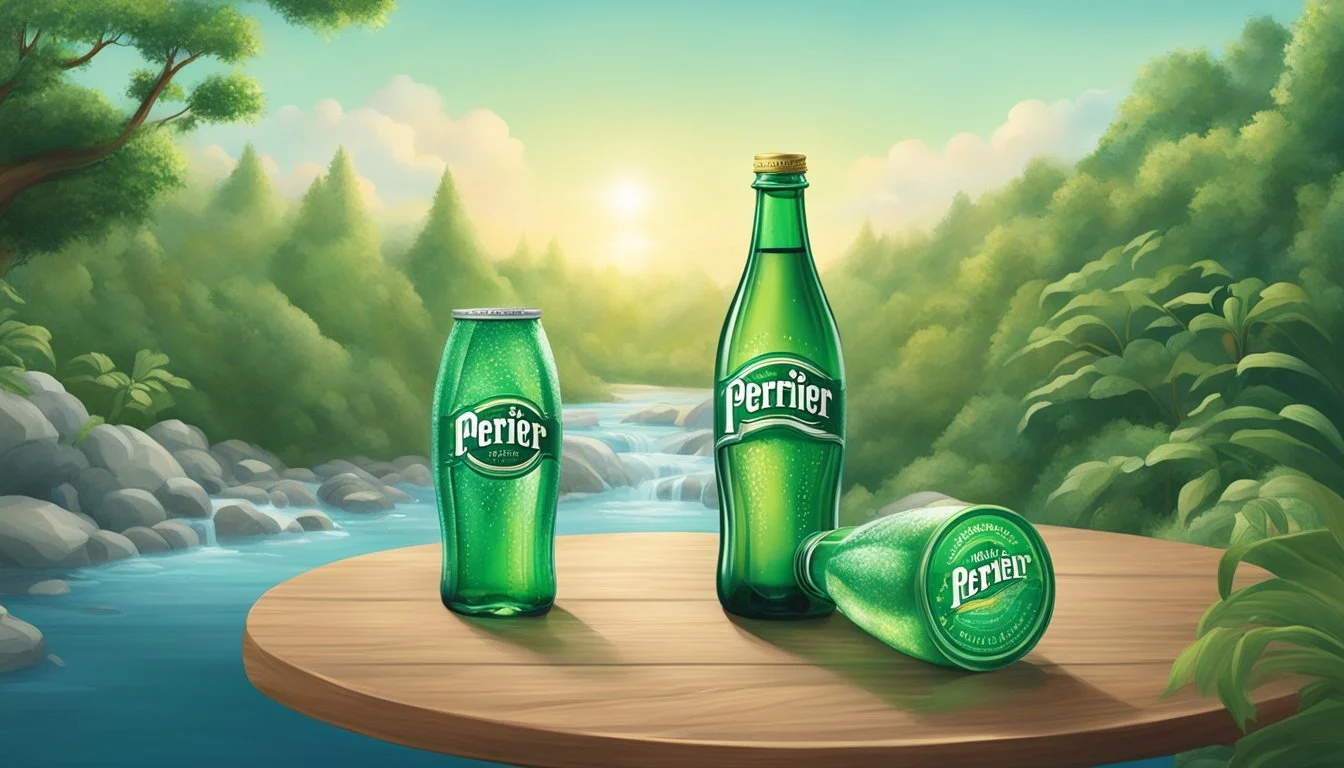Perrier vs. Path
Which Bottled Water is Better for You?
Choosing between Perrier and Path bottled waters can seem overwhelming given the myriad options available, but understanding their key differences can simplify the decision. Perrier, a renowned French brand, is celebrated for its naturally carbonated mineral water, offering a distinct, refreshing fizz that stands out in taste and texture. Path, on the other hand, emphasizes sustainability with its refillable aluminum bottles and high-quality purified water.
For those who value mineral content and a unique, effervescent experience, Perrier is often the preferred choice. It's rich in naturally occurring minerals that can contribute to daily nutritional needs. Perrier’s iconic green bottle has become synonymous with sophisticated hydration, and it is often chosen by those who seek a classic and reliable option in sparkling water.
Path appeals to environmentally conscious consumers who appreciate its commitment to reducing single-use plastics. The brand’s reusable bottle design aligns with a zero-waste lifestyle, making it a practical option for active individuals looking for an eco-friendly alternative. Path’s purified water ensures a clean, crisp taste without the natural character that Perrier offers.
Understanding Bottled Water
Choosing the right bottled water means considering its origin, source, and type. This ensures a better grasp of what each option offers in terms of quality and composition.
Origin and Source
The origin and source of bottled water significantly influence its taste and mineral content. Perrier comes from a natural spring in Vergèze, France, and is naturally carbonated, giving it its distinctive sparkling quality. Path Water, in contrast, often promotes sustainability and is sourced from various places, depending on the brand or region.
Spring waters, like Perrier, are valuable for their mineral-rich content provided by natural underground sources. They are filtered naturally by rocks and earth layers. Other bottled waters can also be sourced from wells, purified municipal supplies, or specific rivers. Cleanliness and mineral content vary based on the source.
Types of Bottled Water
There are various types of bottled water, each with distinct characteristics. Mineral water contains natural minerals and is typically sourced from mineral springs. It is prized for its potential health benefits. Perrier is an example, rich in calcium and magnesium but low in sodium and sugar.
Spring water is another popular type, naturally filtered and collected from underground sources. Unlike distilled water, it retains beneficial minerals.
Sparkling water, like Perrier, is infused with carbon dioxide, making it fizzy. This carbonation can occur naturally or be added during bottling. Path Water typically offers still water without carbonation but focuses on eco-friendly, refillable aluminum bottles, which are a practical choice for reducing plastic use.
Understanding these types provides insights into what consumers can expect in terms of flavor, health benefits, and environmental impact.
Health and Nutrition
When considering the health and nutrition aspects of Perrier and Path bottled waters, it is important to examine their mineral content and the presence of vitamins.
Mineral Content
Perrier is a naturally carbonated mineral water sourced from the Vergèze spring in France. It contains naturally occurring minerals like calcium and magnesium. These minerals can support bone health and enzymatic functions. The calcium content is approximately 147 mg/L, and magnesium content is around 3 mg/L in Perrier.
Path water, typically purified through reverse osmosis, may have lower natural mineral content compared to Perrier. Some bottled water brands add minerals for taste and purported health benefits, but Path’s mineral levels remain minimal, making Perrier potentially more beneficial in this respect. Potassium is another key mineral, often absent in purified waters like Path.
Vitamins in Water
Neither Perrier nor Path bottled waters are significant sources of vitamins. Water, in general, is not a carrier for vitamins as they are organic compounds more typically found in food.
The health impact of vitamins in water is minimal. Consumers are advised to meet their vitamin needs from fruits, vegetables, and other food sources rather than relying on bottled water. This is true for both Perrier and Path, as neither offers appreciable vitamin content.
Thus, when considering nutrients like minerals and vitamins, Perrier provides some minerals, while both options do not offer significant vitamin benefits.
Taste Profile
Perrier and Path offer distinct taste experiences shaped by their unique origins and processing methods. Key elements include flavor, carbonation, and overall drinking sensation.
Flavor Determinants
Perrier boasts a vibrant, mineral-rich taste thanks to its natural carbonation and source in the South of France. The presence of minerals like calcium and magnesium contributes to its distinctive, slightly salty flavor. Path, a purified water, emphasizes a cleaner, more neutral taste profile.
The bubbles in Perrier add a subtle sharpness, enhancing the overall drinking experience. In contrast, Path's flat composition is straightforward and unembellished, making it versatile for pairing with various foods. While Perrier provides a unique refreshment, Path remains consistently unobtrusive and clean.
Sommelier Perspective
Sommeliers often appreciate Perrier for its effervescence and mineral complexity, characteristics that can complement a range of foods. The light carbonation and natural flavors make it a suitable pairing for citrus-infused dishes and seafood.
Path, with its pure and neutral taste, offers versatility without altering the flavors of delicate cuisines. Its lack of carbonation makes it preferable for those who find sparkling waters too aggressive. Both waters cater to different preferences: Perrier for an effervescent twist and Path for a pure, understated experience.
Branding and Marketing
Branding and marketing efforts play a crucial role in establishing Perrier and Path in the competitive bottled water market. Each uses distinct strategies to appeal to their respective target audiences, leveraging their unique brand identities and shaping consumer perceptions effectively.
Brand Identity
Perrier is renowned for its sparkling mineral water, often associated with elegance and sophistication. The brand boasts a history dating back to 1863 in France, which adds to its allure and credibility. Perrier's iconic green bottle and its naturally carbonated water are key distinguishing features. It positions itself as a premium option, aiming to attract those with refined tastes.
Path, a relatively newer brand, markets itself with a strong sustainability message. It uses aluminum bottles that are reusable and eco-friendly, catering to the environmentally conscious consumer. Path's sleek and modern design resonates well with younger demographics who prioritize sustainability in their purchasing decisions. By emphasizing its eco-friendly packaging, Path differentiates itself in a crowded market.
Consumer Perceptions
Perrier's branding creates an image of luxury and class, which appeals to consumers seeking high-quality, mineral-rich sparkling water. It is often perceived as a status symbol, ideal for social gatherings or personal indulgence. Its consistent quality and historical significance give it a trusted reputation among its audience.
Path's marketing targets the eco-conscious and health-aware segments. Customers appreciate the brand's commitment to reducing plastic waste and promoting reusability. Path's emphasis on sustainable practices and sleek packaging helps it gain a loyal customer base that values environmental responsibility. This perception strengthens its market position, appealing to a growing number of consumers looking for eco-friendly alternatives in bottled water.
Environmental Impact
Perrier and Path approach environmental impact through various sustainability practices and carbon footprint management.
Sustainability Practices
Perrier sources its carbonated mineral water from a natural spring in Vergèze, France. This spring is protected to maintain the integrity and safety of the water source. Perrier uses glass and PET bottles. Glass is highly recyclable, while PET production aims to include more recycled content. They have implemented recycling initiatives and collaborate with organizations to promote global conservation efforts.
Path focuses on refillable aluminum bottles, reducing single-use plastic waste. The company's EPA compliance ensures water quality and safety standards. Path actively engages in campaigns to educate consumers on the importance of sustainability and reducing plastic usage. By investing in more durable materials, Path aims to minimize environmental degradation associated with disposable plastic bottles.
Carbon Footprint
Perrier's products have a notable carbon footprint because transportation and carbon dioxide emissions from carbonation are significant contributors. While glass bottles are eco-friendly, they are heavier, increasing transportation emissions. Perrier aims to balance this with its sustainability programs, including using renewable energy in production.
Path's use of aluminum bottles involves considerations for both production and lifecycle. Aluminum is more energy-intensive to produce initially but can be recycled endlessly, drastically reducing its long-term carbon footprint. The lightweight nature of aluminum also reduces transportation emissions compared to heavier glass bottles.
Path’s commitment to reducing carbon emissions aligns with broader sustainability goals, aiming to provide consumers with a more eco-friendly hydration option. Both companies continue to explore innovative ways to minimize their environmental impact, directly influencing their competition and market strategies.
Water Quality and Safety
Water quality and safety are paramount when choosing between Perrier and Path bottled waters. This section examines the pH levels and regulatory standards to help readers make an informed decision.
pH Levels and Acidity
pH levels indicate the acidity or alkalinity of water, which affects taste and potential health benefits. Perrier typically has a pH of about 5.5, making it slightly acidic, while Path water is closer to a neutral pH of 7.
Tap water in the United States often ranges between 6.5 and 8.5, regulated by the EPA to ensure safety. Consumers who are health-conscious or sensitive to acidity might prefer Path for its neutral pH. Path's neutral pH aligns closer to the EPA's recommendations for drinking water, reducing the likelihood of enamel erosion or digestive issues linked to more acidic water sources.
Regulations and Standards
Both Perrier and Path comply with stringent regulations to ensure water safety and quality. Perrier is regulated by the European Union and the Food and Drug Administration (FDA) in the United States. These bodies enforce strict limits on contaminants and require regular testing.
Path also adheres to safety standards set by the FDA, ensuring it meets the required guidelines for purity and contaminants. The EPA governs tap water and sets maximum allowable levels for various contaminants. Bottled waters like Path and Perrier must meet similar or stricter standards.
In both cases, consumers can trust that these brands provide water that is as safe as, if not safer than, tap water. Both companies conduct regular testing to maintain their reputations for high quality and safety.
Economic Factors
When comparing Perrier and Path bottled water brands, several economic factors come into play. This analysis examines the price differences and the relative market competitiveness of both brands.
Pricing Comparison
Perrier is positioned as a premium sparkling water brand, often reflecting its higher price point due to its signature effervescence and mineral content. Path, typically known for its sustainable packaging and still water offerings, usually has a more moderate price range.
Perrier: Often found at higher price points, influenced by its premium branding and imported status.
Path: Known for using eco-friendly aluminum bottles and offering competitive pricing within the still water category.
Cost-conscious consumers might lean towards Path for everyday hydration, while those seeking a luxury experience or preferring sparkling water might opt for Perrier.
Market Competitiveness
Perrier has a well-established presence globally, recognized for its unique taste and carbonation. It targets consumers who prefer high-end products and are willing to pay for quality sparkling water.
Path differentiates itself with a strong focus on environmental sustainability, appealing to eco-conscious consumers. Its refillable aluminum bottles reduce plastic waste and attract a market segment invested in green practices.
Perrier: Dominates in the premium sparkling water niche with significant market share internationally.
Path: Gaining traction among environmentally aware consumers, carving out a unique niche in the bottled water market with sustainable packaging solutions.
Understanding these economic factors helps consumers make informed decisions based on price, brand positioning, and market trends.
Consumer Insights
Consumer preferences for bottled water brands often hinge on factors like taste, perceived purity, and brand reputation. Understanding these preferences and purchasing trends is essential in determining which brand appeals more to its customer base.
Preference Statistics
When comparing Perrier and Path, it's important to recognize what consumers look for in bottled water. Perrier's distinctive effervescence and mineral content attract those who prefer a sparkling drink with a refined taste. Path, on the other hand, markets itself as an eco-friendly alternative, appealing to environmentally conscious consumers.
Key factors influencing choice:
Taste: Perrier's unique mineral blend versus Path's straightforward purity.
Brand reputation: Perrier's established history compared to Path’s innovative approach.
Environmental impact: Path’s emphasis on sustainability may draw customers away from traditional brands.
Purchasing Trends
Analyzing purchasing behaviors reveals interesting trends. Perrier has a consistent following among those who seek premium sparkling water. It's often associated with sophistication, making it popular in upper-market settings. This aligns with lifestyle choices, where Perrier complements a refined and luxurious lifestyle.
Conversely, Path leverages the growing movement towards sustainability. Their reusable aluminum bottles cater to eco-friendly consumers, appealing to individuals and communities focused on reducing plastic waste. This can be seen in urban areas and younger demographics that prioritize eco-conscious products.
Market observations:
Retail environments: Perrier remains a staple in fine dining and upscale retail.
Distribution: Path often partners with health-focused grocery stores and online platforms.
Consumer demographics: Perrier appeals to older, affluent consumers, while Path attracts younger, eco-aware buyers.
By understanding these consumer insights, one can better appreciate how Perrier and Path position themselves in the competitive bottled water market.
Conclusion
Choosing between Perrier and Path involves considering various factors. For many consumers, health benefits are paramount.
Perrier offers naturally occurring minerals and is an excellent option for those on low-sodium diets. With less than 10mg of sodium per liter, it meets the needs of health-conscious individuals.
Path, a newer entrant in the bottled water market, emphasizes sustainability and a reusable bottle. While specific nutritional information may not feature prominently, the brand's commitment to environmental preservation is notable.
When comparing consumer choices, consider taste, bottle design, and the presence of additives. Perrier, for instance, is a favorite among sparkling water enthusiasts, while Path appeals more to eco-conscious buyers with its focus on reducing plastic waste.
Aspect Perrier Path Mineral Content Naturally occurring minerals Not prominently featured Sodium Levels Less than 10mg per liter Not specified Bottle Design Standard bottled sparkling water Reusable bottle, eco-friendly Target Audience Sparkling water enthusiasts Eco-conscious consumers
Both Perrier and Path offer unique advantages, whether focusing on health benefits or environmental impact.
More About Perrier
Icelandic Glacial vs Perrier: Which Bottled Water is Better?
Mountain Valley Spring Water vs Perrier: Which Bottled Water is Better?
Perrier vs Kirkland Signature: Which Bottled Water is Better?
Perrier vs Richard's Rainwater: Which Bottled Water is Better?
Perrier vs Whole Foods Italian Still Mineral water: Which Bottled Water is Better?







